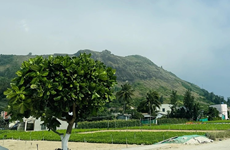Xoan singing a valuable cultural heritage in Phu Tho
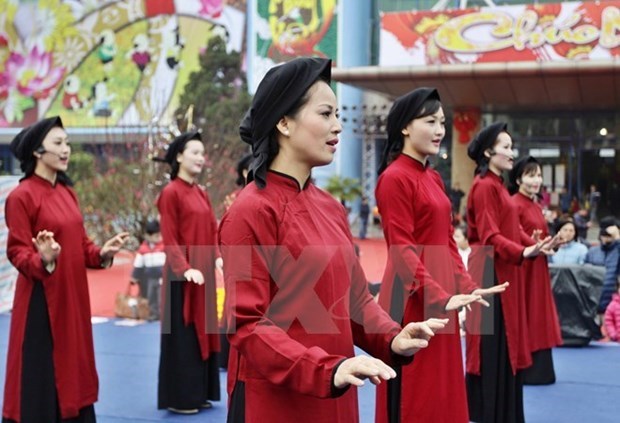 A Xoan singing performance. (Photo: VNA)
A Xoan singing performance. (Photo: VNA)Hanoi (VNA) - Xoan singing is a valuable intangible cultural heritage of the ancestor land of Phu Tho. This heritage has links to the worship of Hung Kings, a belief that originates from the Vietnamese practice of ancestor worship. According to researchers, Xoan singing in Phu Tho and the worship of Hung Kings have a strong bond as Xoan singing is performed during the ritual.
Xoan villages in Phu Tho all originated from ancient villages of the early nation state, previously known as Van Lang. Therefore, the art contains various historical and cultural elements belonging to the time the nation was founded.
Xoan singing has a close bond with festivals and spiritual lives of people.
The origin of the art has various versions told in the form of legends during Hung King's time. One of them states that Xoan singing was performed in spring to welcome the new year and also to pray for favourable weather, good crops, wealth, fortune, peace and blessings for Hung Kings.
However, some music researchers believe that Xoan singing emerged in around the 15th century, during the Later Le Dynasty (1428–1789), as the lyrics bear literary forms and styles of the period.
Prominent artistic values of Xoan singing
Xoan singing is a type of traditional art performed during rituals and celebrations, comprising multiple elements of melodies, singing and dancing that serves the spiritual demands of the community.
The art took roots in Phu Tho province and then was brought to other villages along the Red River, and Vinh Phuc province in particular. Four ancient Xoan guilds include An Thai, Phu Duc, Kim Doi and Thet located in two communes of Kim Duc and Phuong Lau in Phu Tho.
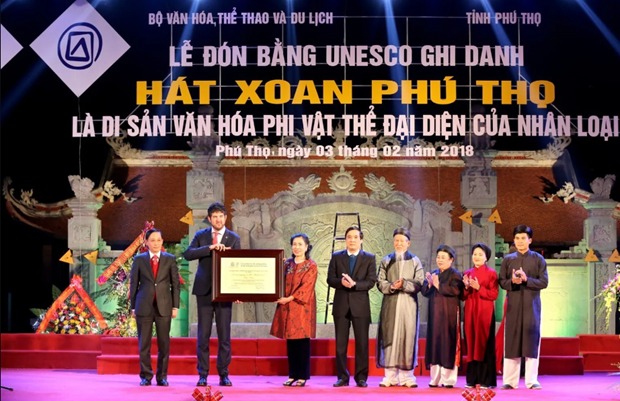 A ceremony to welcome UNESCO certificate recognising Xoan singing as an intangible cultural heritage of humanity.
A ceremony to welcome UNESCO certificate recognising Xoan singing as an intangible cultural heritage of humanity.(Photo: VNA)
Xoan singing can be sung in a variety of styles. It can be solemn and slow, as well as quick melodies, and elegant and endearing parts. A specific set of dance movements always accompany the lyrics and melodies.
Xoan performances usually follow proper order. The vitality and sustainability of the art lies in its ability in being able to serve both celebrations and for courtship.
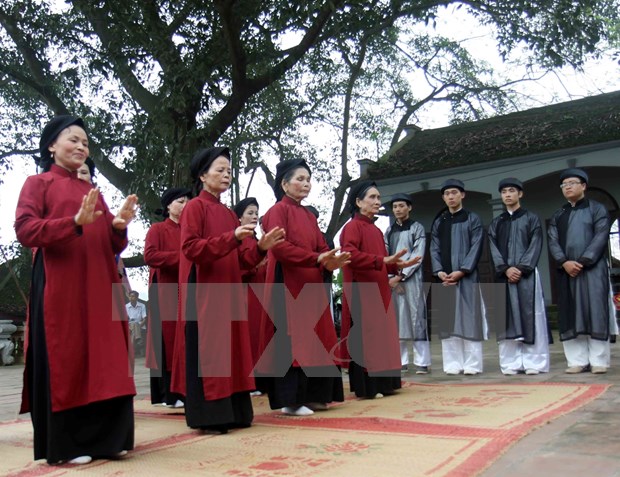 A Xoan singing performance in Phu Tho province.(Photo: VNA)
A Xoan singing performance in Phu Tho province.(Photo: VNA)The art has a systematic organisational structure, as performers often reside in the same villages and set up Xoan guilds, creating art troupes among relatives. Heads of a Xoan guild are people with social experience and can perform lengthy written works.
Male performers are referred to as ‘Kep’, while their female counterparts ‘Dao’. Each Xoan guild has 15-18 members.
Preserving Xoan singing in modern time
On December 24, 2011, Vietnam’s Xoan singing in Phu Tho was officially recognised by UNESCO as an Intangible Cultural Heritage in Need of Urgent Safeguarding, during the sixth session of the Intergovernmental Committee for the Safeguarding of the Intangible Cultural Heritage held in Bali, Indonesia.
The UNESCO Intergovernmental Committee for the Safeguarding of Intangible Cultural Heritage added the art form to the Representative List of the Intangible Cultural Heritage of Humanity during its 12th session in December 2017.
This is the first time that the UNESCO committee has decided to pull a heritage out of the list of those in need of urgent protection and transfer it to the Representative List of the Intangible Cultural Heritage of Humanity. The move marked initial success of Phu Tho province and the community in realising a commitment of preserving the heritage during the past six years.
Traditional festivals combining the worship of Hung Kings and Xoan singing have been maintained and recovered, building a space for performing as well as teaching the art to future generations.
Local authorities of Phu Tho have paid due regard to the conservation and upholding of Xoan singing values. All spaces at ancient Xoan guilds and most of 30 performance venues have been restored and fully recovered.
Previously, there were only seven artisans able to teach the art. To date, the number has risen to nearly 100, with 300 trainees.
The province has 34 Xoan clubs of provincial levels with more than 1,500 members; 64 clubs at district level and 42 at commune level.
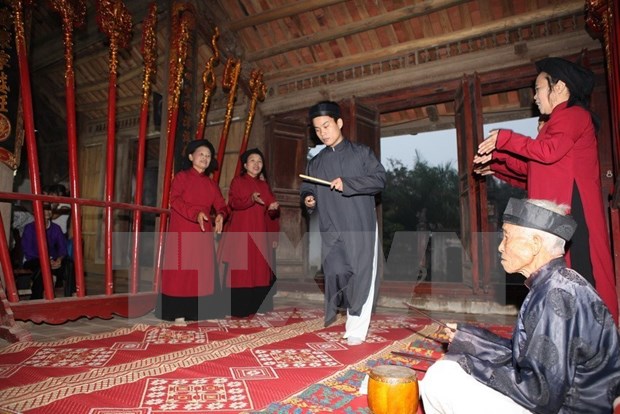 A performance of a prelude melody in Xoan singing. (Photo: VNA)
A performance of a prelude melody in Xoan singing. (Photo: VNA)Xoan performances are primarily arranged in the spring, starting the first day of the lunar year.
The art is also an inseparable part of the Hung Kings' Commemoration Day./.






